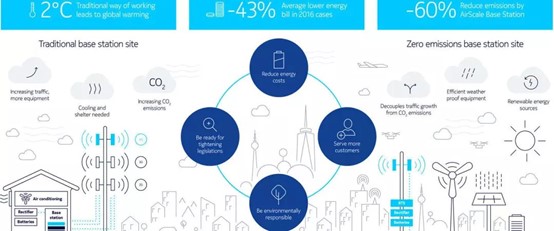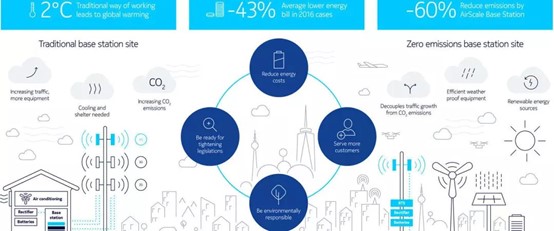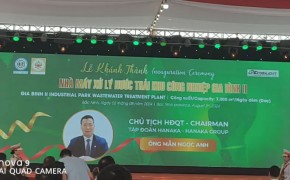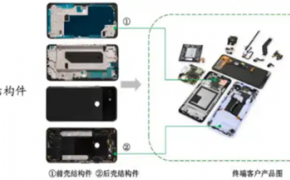富士康旗下子公司鸿腾精密(06088)近日好消息不断,在继印度泰伦加纳邦(Telangana)的一位官员表示,鸿腾精密位于泰伦加纳邦海得拉巴(Hyderabad)附近的工厂已经完成建设,并最早将于2024年8月开始生产首批耳机设备,其中也包括苹果(Apple)的AirPods后,诺基亚的越南高管对外表示,鸿腾精密科技(06088)将在越南北江省扩建新工厂,用来生产诺基亚5GAirScale产品。产品包括用于5G基站的最新一代大规模MIMOAirScale设备。项目将于7月启动,预计从9月开始增产。
据了解,诺基亚在越南开展业务已有30年,近年来除了一直参与越南电信服务提供商的5G部署项目外,还在越南组织生产,把5G基站从越南出口到东盟国家和日本等国。
全球开始大规模推广5G通讯基建后,鸿腾精密科技主要通过河内的一家工厂为诺基亚生产5G基站。不过在过去两年中,诺基亚在全球(不包括中国市场)的5G市场份额增长了22%至29%。
诺基亚已与全球不同国家的运营商签订了319份5G网络部署合同,并愿意与越南运营商合作。因此诺基亚加大了在越南的产能布局,希望富士康与鸿腾精密为其提供新的产能合作。
富士康在越南北江省启动了新的制造工厂进行扩产,以满足越南国内市场和国际市场日益增长的需求,扩产项目将于2024年7月启动,并于2024年9月开始增产。
如去年11月诺基亚宣布与日本最大电信运营商NTTdocomo携手,在日本商业网络全面部署符合O-RAN规范的全新诺基亚开放式无线电接入网络(RAN)5GAirScale基带解决方案。诺基亚的O-RAN兼容的AirScale5G基带解决方案具有强大的竞争力,可连接到NTTDocomo5G商业网络上的任何O-RU。新一代AirScale通信方案采用了最先进的ReefShark系统芯片技术,不仅占地面积更小,而且功耗更低,其高性能和低功耗能降低运营成本的同时,还支持可持续性发展,为NTTDocomo带来了持续的竞争优势和更低的运营成本。
诺基亚的5G基站为AirScale5G产品系列组合,涵盖基带、远程无线射频以及支持数字波束赋形的大规模MIMO有源天线,其轻量化的外形并不影响支持高无线电频谱带宽(200MHz占用带宽和400MHz瞬时带宽)和提供高功率射频输出。
诺基亚AirScale基站,包括新的多频带射频组件和系统模块,作为单一无线接入网络SingleRAN,支持所有基站内同时运行的无线技术,包括2G、3G、TDD-LTE、FDD-LTE、LTEAdvanced和LTEAdvancedPro,集成电信级Wi-Fi接入,且支持5G技术;基带单元可以链接起来,创建几乎无限的容量和连接,从而满足巨大的物联网连接和5G速度需求;云无线接入网络CloudRAN采用诺基亚强大的AirframeIT硬件,该硬件符合严格的无线接入能力、安全和时延要求;在与云无线接入网络CloudRAN相同的服务器上,实施移动边缘计算(MEC),轻松集成可使用无线设备信息的应用,来支持低时延服务;诺基亚面向未来的管理解决方案NokiaNetAct和NokiaCloudBandTM可用于传统无线网络和新的云无线接入网络CloudRAN,轻松实现虚拟化。
由于诺基亚的5G基站在分布式和集中式架构中支持多个频率,所以在网络发展方面具有极大的灵活性,可以满足物联网中数十亿设备互联,支持工业4.0、智慧城市、数字医疗和移动生活等新应用场景等。
据了解,在移动网络中,基站是耗能大户,大约有80%的能源消耗都出自基站。随着5G临近,网络负荷大幅增长,基站耗电和设备散热问题日趋严重——移动运营商报告显示,每年约有10%-30%的移动网络能源增长。
鸿腾精密为诺基亚生产的AirScale5G基站,在原有的传统无线电接入技术中升级优化,能够同时满足5G、云端和物联网时代的未来需求。它不仅能为前所未有的用户体验提供高质量的连接和覆盖,还能在需要时拓展网络,其杰出的灵活性可以为诺基亚降低低至60%的能源损耗。
配备的MassiveMIMO自适应天线作为诺基亚首个3.5GHz频段的产品,具备卓越的性能与更高的网络容量。极具突破的性能不仅使得基站站点的部署选项大大增加,更使得基带单元功耗降低64%,从而减轻基站排放负担。
而诺基亚零排放解决方案的5G基站,采用SingleRAN的转换将节省70%的能源,同时将碳排放从70多吨减少到17吨。与LTE覆盖解决方案相比,SingleRAN基站还能降低30%的总开支。

同时5G基站所消耗的90%的电能都会转化为多余的废热,而每千瓦的废热都同样需要一千瓦的能源冷却。为了实现零排放,诺基亚的5G基站采用液冷技术,与传统的空气冷却系统相比,液体冷却技术为一般中转站降低多达50%的能源消耗;可回收废热,将其作为能源进行二次利用;在布局上大大缩小了基站体积,比普通基站体积减少了30%;综合下来可以将基站功耗降低30%,减少二氧化碳排放量高达80%。
诺基亚表示,鸿腾精密越南北江的产能建成后,鸿腾精密将成为诺基亚5G基站的全面合作伙伴,未来诺基亚与全球不同国家的运营商签订的319份5G网络部署合同中,大部分5G基站都将由越南鸿腾精密制造完成。
Foxconn's subsidiary Hongteng Precision (06088) has been receiving good news recently, following an official in Telangana, India, an official said that Hongteng Precision's factory near Hyderabad in Telangana has completed construction. And as early as August 2024, the production of the first batch of headphone devices, including Apple's AirPods, Nokia's Vietnamese executives said that Hongteng Precision Technology (06088) will expand a new factory in Bac Giang Province, Vietnam, to produce Nokia 5GAirScale products. Products include the latest generation of massive MIMOAirScale devices for 5G base stations. The project will start in July and is expected to ramp up production from September.
It is understood that Nokia has been operating in Vietnam for 30 years, and in recent years, in addition to participating in the 5G deployment project of Vietnamese telecom service providers, it has also organized production in Vietnam and exported 5G base stations from Vietnam to ASEAN countries and Japan.
After the global large-scale rollout of 5G communication infrastructure began, H&T Precision Technology mainly produced 5G base stations for Nokia through a factory in Hanoi. However, over the past two years, Nokia's 5G market share worldwide (excluding China) has increased by 22% to 29%.
Nokia has signed 319 5G network deployment contracts with operators in different countries around the world and is willing to cooperate with Vietnamese operators. Therefore, Nokia has increased its production capacity layout in Vietnam, hoping that Foxconn and Hongteng Precision will provide it with new production capacity cooperation.
Foxconn has launched a new manufacturing plant in Bac Giang province, Vietnam, to meet the growing demand from the domestic and international markets, and the expansion project will start in July 2024 and start ramping up production in September 2024.
For example, in November last year, Nokia announced that it would work with NTTdocomo, Japan's largest telecom operator, to fully deploy the new Nokia Open Radio Access Network (RAN) 5GAirScale baseband solution that complies with the O-RAN specification in Japan's commercial networks. Nokia's O-RAN compliant AirScale 5G baseband solution is competitive and can be connected to any O-RU on the NTTDocomo5G commercial network. The next-generation AirScale communication solution uses the most advanced ReefShark SoC technology to deliver a smaller footprint and lower power consumption, while providing NTTDocomo with a sustainable competitive advantage and lower operating costs through its high performance and low power consumption, while reducing operating costs.
Nokia's 5G base stations are part of the AirScale 5G product family portfolio that includes baseband, long-range radio and massive MIMO active antennas with digital beamforming, without compromising on supporting high radio spectrum bandwidth (200MHz occupied bandwidth and 400MHz instantaneous bandwidth) and providing high-power RF outputs.
The Nokia AirScale base station, including the new multi-band RF components and SoC, acts as a single radio access network, SingleRAN, supporting all wireless technologies operating simultaneously within the base station, including 2G, 3G, TDD-LTE,FDD-LTE, LTEAdvanced, and LTEAdvancedPro, which integrate carrier-grade Wi-Fi access and support 5G technology; baseband units can be linked together to create virtually unlimited capacity and connectivity to meet the huge demand for IoT connectivity and 5G speeds; CloudRAN uses Nokia's powerful AirframeIT hardware, which meets stringent requirements for wireless access, security, and latency. Implement mobile edge computing (MEC) on the same server as CloudRAN to easily integrate applications that can use wireless device information to support low-latency services. Nokia's future-proof management solutions, NokiaNetAct and NokiaCloudBandTM, can be used for both traditional wireless networks and the new cloud radio access network, CloudRAN, for easy virtualization.
Because Nokia's 5G base stations support multiple frequencies in distributed and centralized architectures, they have great flexibility in network development to meet the needs of billions of devices connected in the Internet of Things and support new application scenarios such as Industry 4.0, smart cities, digital healthcare, and mobile life.
It is understood that in the mobile network, the base station is a large energy consumer, and about 80% of the energy consumption comes from the base station. With 5G approaching, network loads are increasing dramatically, and power consumption and equipment cooling issues are becoming more and more serious – mobile operators report that about 10%-30% of mobile network energy growth is expected each year.
The AirScale 5G base station produced by H&Teng Precision for Nokia is upgraded and optimized in the original traditional radio access technology, which can meet the future needs of the 5G, cloud and Internet of Things era at the same time. Not only does it provide high-quality connectivity and coverage for an unprecedented user experience, but it also allows the network to expand when needed, and its flexibility can reduce energy consumption by as little as 60% for Nokia.
As Nokia's first product in the 3.5GHz band, Nokia's MassiveMIMO adaptive antenna offers superior performance and higher network capacity. The breakthrough performance not only greatly expands the deployment options of the base station site, but also reduces the power consumption of the baseband unit by 64%, thereby reducing the burden of base station emissions.
Nokia Zero Emission Solution's 5G base stations, with SingleRAN conversion, will save 70% of energy while reducing carbon emissions from more than 70 tons to 17 tons. Compared to LTE coverage solutions, SingleRAN base stations also reduce total expenses by 30%.

At the same time, 90% of the power consumed by 5G base stations will be converted into excess waste heat, and every kilowatt of waste heat will also need one kilowatt of energy cooling. In order to achieve zero emissions, Nokia's 5G base stations use liquid cooling technology, which reduces energy consumption by up to 50% compared to traditional air cooling systems. Waste heat can be recovered and used as energy for secondary use; In terms of layout, the volume of the base station is greatly reduced, which is 30% less than the volume of ordinary base stations; Combined, it can reduce base station power consumption by 30% and CO2 emissions by up to 80%.
Nokia said that after the completion of the production capacity of Bac Giang in Vietnam, Hongteng Precision will become a full partner of Nokia's 5G base station, and in the future, Nokia will sign 319 5G network deployment contracts with operators in different countries around the world, most of the 5G base stations will be manufactured by Vietnam Hongteng Precision.








